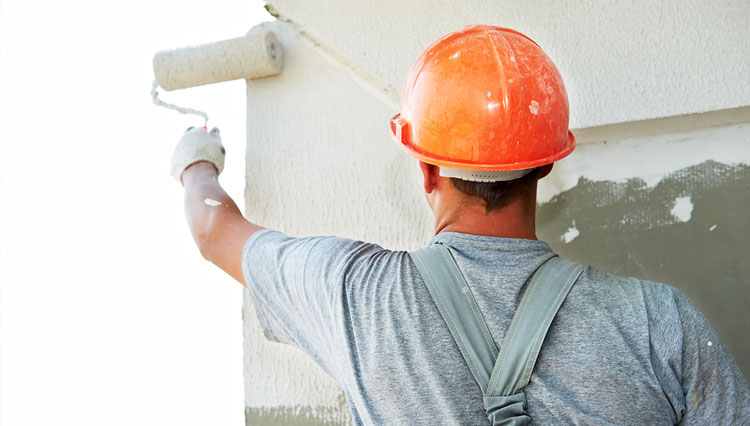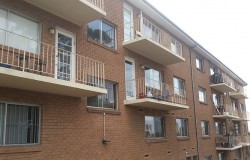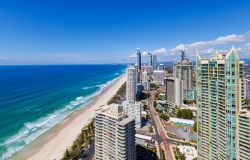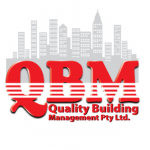Property Owners – To paint or not to paint?
To paint or not to paint, is the question that many property owners and Strata Schemes ask.
In fact, there should be many more questions that are asked before decisions are made to repaint a complex.
Questions
- Is the paintwork that bad that it requires repainting?
- Are there building defects to rectify?
- Are there any water leaks?
- Are there upgrade works planned?
- Has the building been washed down?
- How will I pay for the repainting?
- Lump sum
- Staged program
- Panned program
Is the paintwork that bad that it requires repainting?
How bad is the paintwork? Does it really need a full repaint, or could the repainting be put off?
Things to consider as property owners are:
- Can only parts of the complex be painted to improve appearance?
- Will washing the building improve the appearance and increase the life of the paintwork?
- How old is the current paintwork? Is it powdery?
Are there building defects to rectify?
The absolute worst thing that seems to happen to property owners all the time is to let a repainting contract only to be hit by significant cost overruns due to variations to rectify building defects.
Variations are the cream that makes contractors profits. Every contractor loves variations.
The professional and prudent course of action is to undertake a defects inspection on the complex prior to considering repainting so that all defects can be rectified prior to the painting contractors starting, or to add the rectification works within the one contract.
This is a surefire way to save money.
Are there any water leaks?
Apart from your standard defects like cracking to render and rotten timbers, the most common defect is water leaks.
Sometimes water leaks are not clearly visible and may not be visible from the external.
All internal areas, especially around windows should be inspected prior to commencing any painting works.
In almost 100% of buildings constructed of masonry, windows will leak, damaging the internal wall linings. The most common cause is that the builders had not sealed the window openings in a “waterproof membrane” prior to installing the windows.
There are solutions to this problem, but all are costly. The builder should be the first person you contact as it is their responsibility to rectify all water leaks.
Should this not be successful, you will be left with the bill for rectification works. QBM can assist with designs for rectification. However, all water leaks must be rectified before any repainting work.
Are there upgrade works planned?
Should there be some upgrades, which may only be minor that will improve the amenity of the complex before repainting.
Can such upgrades be included in the one contract as the painting to save money?
Has the building been washed down?
Regular washing of the building will increase the life expectancy of the paintwork. In some cases, an extension of 3 to 4 years can be achieved.
However, get quotes for yearly washing of the building and identify if there is an actual saving.
So, let’s work this out.
Say the repaint cost is $100,000 and last 12 years.
Annual washing will cost $3,500 per year.
Washing will cost $38,500 over 11 years
Saving of 4 years before repainting = $33,333
In this case, the savings generated by regular washing is not achieved. You would need to increase the life of the paint by 5 years or get washing quotes less than $3,500.
But the appearance of the complex will always look good if regularly washed.
How will I pay for the repainting?
The biggest question to ask is “How will I pay for the repaint”?
There are 3 main options for repainting a complex.
- Lump sum
- Staged program
- Planned program
Lump sum
The most common manner to pay for repaints is via saving each year until sufficient money is available to fully pay for the repaint and any upgrades or defect repairs to the whole complex at the one time.
This is generally the cheapest way to undertake a complex repaint. By obtaining a number of quotes from professional companies, you will generally save money.
But the appearance will suffer in the latter years.
Staged program
Another method to consider is to stage the repainting over several years.
This may involve undertaking building repairs regularly, and painting areas that suffer greater wear and tear more regularly, while extending the time between repaints to the major external surfaces.
When this method includes regular building washing, the complex will maintain a high level of appearance.
The cost of this approach may be higher than the Lump Sum method, but the complex will look better for longer. Suggest:- More presentable for an extended period
Planned Maintenance Program
The Planned Maintenance Program is used by larger complexes where appearance is paramount.
This involves engaging a suitable contractor for a fixed period of time to maintain the paint and appearance of the complex.
Generally, such a program will involve the whole complex receiving a complete repaint after defect rectification works, and then regular maintenance cleaning and painting works over the following 7 years.
The complex will always look good but the cost can be high and will be much higher than a Lump Sum contract.
If you’re a property owner and you’d like some advice, give the strata experts at QBM today a call!






